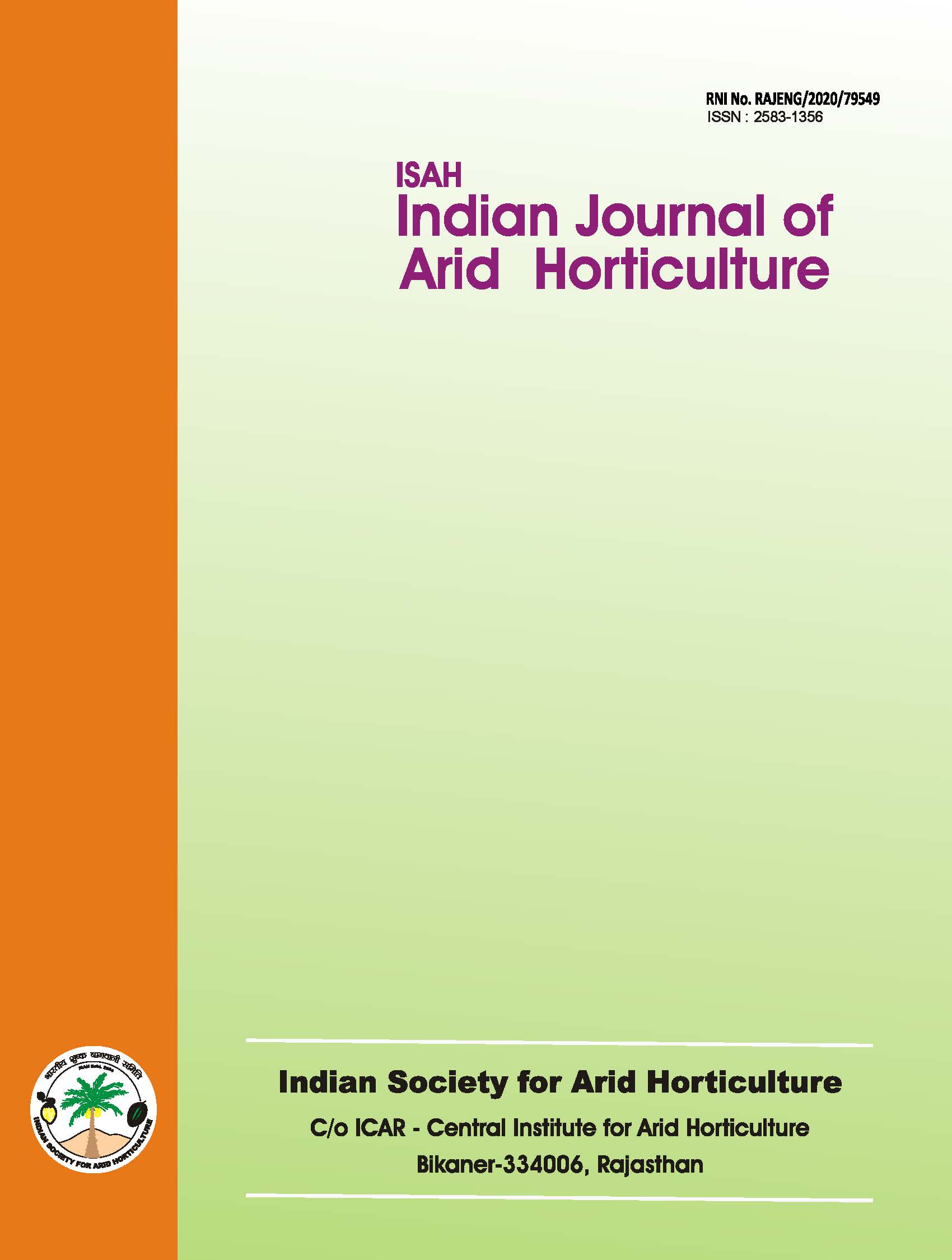Impact of integrating summer vegetables with major cropping systems for profitability and sustainability
DOI:
https://doi.org/10.48165/ijah.2025.7.1.7Keywords:
Cropping systems, summer vegetables, crop diversification, crop intensification, sustainabilityAbstract
Punjab, contributing 35-40% of rice and 40-70% of wheat to the central pool, has a high cropping intensity (196-200%). This study evaluates the economic impact of integrating short-duration summer vegetables with major cropping systems. Survey data revealed that paddy-potato crop rotation recorded the highest net returns (Rs.1,18,467/acre), whereas paddy-wheat had the highest B:C (2.71). Inclusion of summer vegetables significantly increased economic indices like net returns and B:C in paddy-wheat by 84.87 and 4.06 per cent, and in paddy-mustard by 126.23 and 21.46 per cent, respectively. Cultivation of summer vegetables enhanced the land use efficiency from 71.23 to 95.89 per cent in case of paddy-wheat crop rotation. Summer vegetable cultivation increased land use efficiency from 68.49 to 93.15 per cent in paddy-mustard cropping system. Inclusion of summer vegetables significantly enhanced the system productivity of all the existing crop rotations. In paddy-wheat rotation an increase in system productivity by about 179.96 per cent was recorded due to cultivation of summer vegetables. Results of the study clearly show immense potential of short duration summer vegetables in enhancing the farm profitability and sustainability while justifying the objectives of crop diversification in Punjab state.
Downloads
References
Brar, N. S., Saini, D. K., Kaushik, P., Chauhan, J., & Kamboj, N. K. (2019). Directing for Higher Seed Production in Vegetables. In: Agronomy- Climate Change and Food Security, IntechOpen. https://doi.org/10.5772/intechopen.90646
2.
Choudhary, A. K., Saxena, K. B., & Kumari, S. (2024). Accelerating cropping intensity to feed ever-growing population in India. Current Science, 126(7), 756–758.
3.
Dhiman, J. S., Kang, M. S., Parshad, V. R., Khanna, P. K., Bal, S. S., & Gosal, S. S. (2010). Improved seeds and green revolution. Journal of New Seeds, 11(2), 65–103. https://doi.org/10.1080/1522886X.2010.481777
4.
Krishna, H., Hebbar, S., Kumar, P., Sharma, S., Kumar, R., Tiwari, S. K., Maurya, S., Srivastava, K., Pal, G., Bahadur, A., & Behera, T. K. (2024). Navigating challenges and prospects in off-season vegetable production. Vegetable Science, 51, 97–105. https://doi.org/10.61180/vegsci.2024.v51.spl.09
5.
Kumar, S., Pandey, D. S., & Rana, N. S. (2005). Economics and yield potential of wheat (Triticum aestivum) as affected by tillage, rice (Oryza sativa) residue and nitrogen management options under rice-wheat system. Indian Journal of Agronomy, 50, 102–105.
6.
Pushkarna, M. (2017). Literacy Patterns in Punjab: Rural-Urban Differentials. IOSR Journal of Humanities and Social Science, 22(7), 32–39.
7.
Upadhaya, B., Kishor, K., Kumar, V., Kumar, N., Kumar, S., Yadav, V. K., Kumar, R., Gaber, A., Laing, A. M., Brestic, M., et al. (2022). Diversification of rice-based cropping system for improving system productivity and soil health in eastern Gangetic plains of India. Agronomy, 12(10), 2393. https://doi.org/10.3390/agronomy12102393

